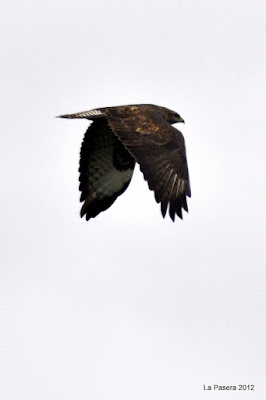The opportunities for birdwatching here in Asturias are many and varied. There are very few bird reserves as such, but there are many natural geographical features that attract a range of birds from near, far and wide.
One such place is The estuary of the Ria de Villaviciosa. This is one of the few places where there is a dedicated exhibition and information centre on the bird-life of the estuary. There aren't any hides on the estuary which is a shame - apparently one was built but destroyed by fire soon after. Dotted around the estuary, there are various stopping points indicated by a sign featuring a pair of binoculars.
The small town of Villaviciosa lies on the western side of the river. To the east bank of the estuary leads to Rodiles beach, a vast golden beach backed with pine and eucalyptus woodlands which are dotted with picnic tables and benches. At this time of year when there are few people around, it is a great place to sit and watch the bird activity in the tree canopy or ground. Along the way, there are may stopping points that are worth exploring and that offer you the chance to take in the views and potential bird-life.
To the west, there are several marsh and wetland areas with easy access by road. The bird life varies depending on the time of year and weather but more often than not there is interesting activity somewhere on land or sky.
We took a picnic lunch and walked around the area, stopping off at various vantage points both to observe and to take photographs. Bird photography isn't easy because it is difficult to get close to the birds. The following link is to a video made on the day by a Spanish bird watcher and his wife who were out filming and photographing. The link is of Ben - The Osprey, eating a fish, he is far out in the middle of the estuary but never-the-less, impossible to photograph with my equipment but it was great to see through binoculars. http://youtu.be/0TUmZORLodo Check out some of Juan's other films as well whilst you are there - most of them are from the estuary.







No comments:
Post a Comment
Click link to read more.